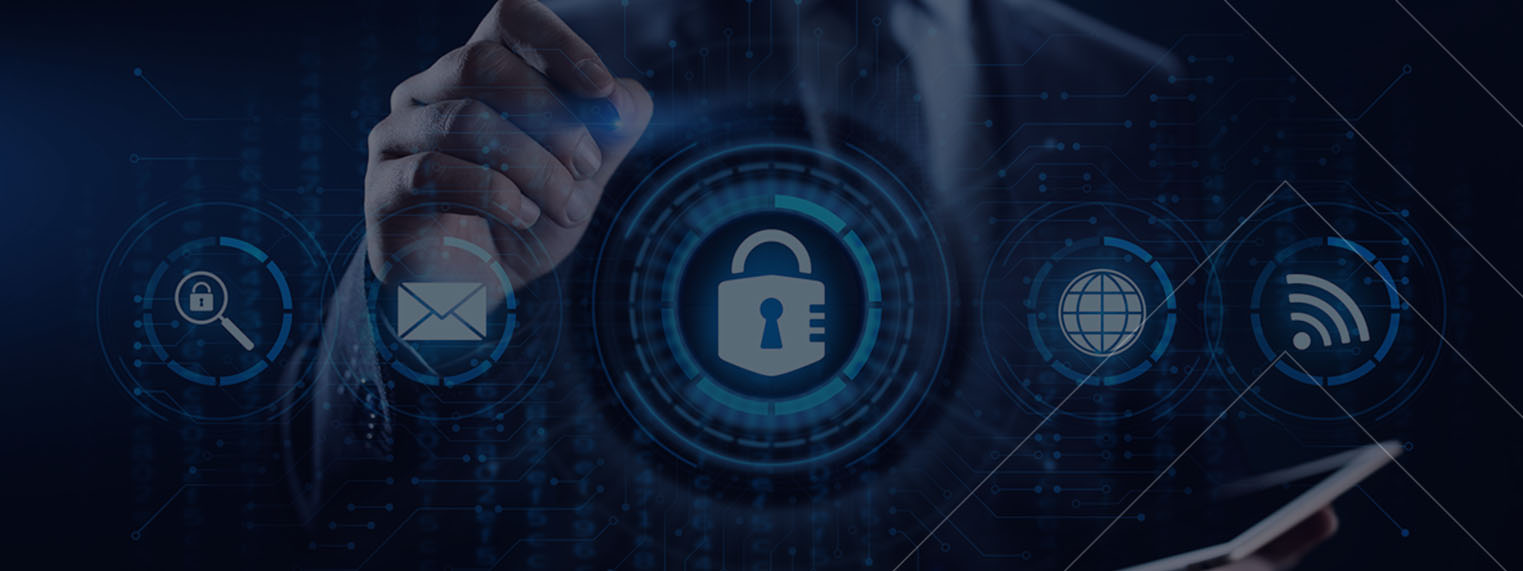
Global Cybersecurity Industry Outlook 2024 - A Look Ahead at the Cyber Landscape
In today's interconnected digital world, our lives are intricately woven into the fabric of technology. From the moment we wake up to the time we go to bed, we rely on digital devices and online services to communicate, work, shop, learn, and entertain ourselves. Our smartphones, laptops, smart home devices, and wearable gadgets have become indispensable tools that facilitate seamless connectivity and access to information anytime, anywhere. In this hyper-connected landscape, the demand for uninterrupted continuity in digital operations has never been greater. However, with this increased reliance on technology comes the inherent risk of cyber threats and vulnerabilities that can disrupt critical operations, compromise sensitive data, and undermine trust in digital systems. The need for robust cybersecurity measures becomes increasingly evident as our reliance on digital technology continues to deepen, from cloud computing and IoT devices to mobile applications and online transactions. This evolution has reshaped the cybersecurity landscape, driving innovation and adaptation to confront an ever-expanding array of cyber threats and vulnerabilities.
For more details, get in touch with us here
With the evolving digital landscape, cybersecurity is also changing in response to the dynamic and complex nature of modern cyber threats. Threat actors, ranging from cybercriminals and hacktivists to nation-state actors, are becoming more sophisticated and persistent in their attacks, targeting organizations across all sectors and industries. As a result, cybersecurity solutions are evolving to incorporate advanced technologies such as artificial intelligence, machine learning, and behavioral analytics to detect and respond to threats in real time. These technologies enable initiative-taking threat hunting, anomaly detection, and automated response mechanisms, enhancing organizations' ability to defend against emerging threats effectively.
Significant investments from large corporations drive this evolution of cybersecurity, acknowledging the importance of safeguarding digital assets and sensitive data within an increasingly interconnected global landscape. Worldwide IT spending is projected to total USD 5.1 trillion in 2024, an increase of 8% from 2023. In 2023, global security and risk management end-user spending is estimated to reach USD 188.1 billion and is projected to total USD 215 billion in 2024, an increase of 14.3% from 2023. These investments serve as catalysts for innovation and technological advancements in cybersecurity solutions, as established industry players and emerging startups prioritize the development of state-of-the-art tools and strategies to counter evolving cyber threats. In the face of an expanding attack surface and the rise of sophisticated adversaries, the cybersecurity sector is experiencing rapid transformation. Startups leverage their agility and fresh perspectives to pioneer inventive approaches to cybersecurity, complemented by the expertise and resources of established firms, which refine existing solutions and pioneer new ones. This collaborative effort shapes a dynamic cybersecurity outlook marked by continuous innovation, strategic partnerships, and initiative-taking adaptation to address the evolving challenges of the digital era.
Regulations and laws worldwide will aim to foster trust in Generative Al for cybersecurity:
In 2024, governments worldwide are poised to introduce regulations and laws to bolster trust in Generative AI within cybersecurity. With the rapid advancements in AI technology, particularly in the realm of Generative AI, a pressing need arises to ensure accountability and reliability in utilizing AI-generated content. These forthcoming regulations will emphasize the importance of transparency and ethical standards in developing and deploying AI systems, particularly those used in cybersecurity applications. By fostering accountability among AI developers and users, these regulatory measures aim to enhance public confidence in the reliability and integrity of AI-driven cybersecurity solutions, ultimately safeguarding against emerging threats in an increasingly digitized world. Together with the European Union, twenty-nine other nations—including the US, Canada, Australia, China, Germany, and India—have come together to stop the "catastrophic harm, either deliberate or unintentional" that comes with the growing use of artificial intelligence.
Transition from passwords to Passwordless security methods for more secure and user-friendly authentication.
In 2024, the momentum behind transitioning from traditional passwords to Passwordless security methods is set to accelerate significantly. Organizations are poised to revolutionize how users access and protect their accounts by leveraging innovative technologies such as biometrics, hardware tokens, and advanced authentication mechanisms. As the digital landscape continues to evolve, identity theft remains a severe and pervasive problem, with malicious actors constantly seeking to exploit vulnerabilities in traditional authentication methods. By embracing Passwordless security solutions, organizations can enhance the security and usability of their authentication processes, providing users with a more robust and user-friendly experience while mitigating the risk of identity theft and unauthorized access. Although most businesses know that using passwords to protect their systems is a terrible idea, using them has stuck since the early days of computers. Microsoft stated that it would phase out Basic Authentication, an antiquated industry standard, on its Exchange platform in 2022. Apple is now developing password replacements, such as its FaceID face recognition technology, and some users can already log in without a password on Google and Amazon.
Governments acting against deep fakes:
Governments across the globe are recognizing the urgent need to address the burgeoning threat of deep fakes, which have the potential to disrupt societal norms and undermine the authenticity of information. As these digitally manipulated videos and images become increasingly sophisticated, there is growing concern about their detrimental effects on privacy, trust, and the dissemination of accurate information. To counteract this menace, governments are actively formulating regulatory frameworks to curb the proliferation of deep fakes and establish guidelines to mitigate their harmful impacts. Legislation was approved in South Korea that prohibits the distribution of deepfakes that could jeopardize public safety. Violators may face up to five years in prison or fines of up to 50 million won, or around 43,000 USD. Similarly, in January 2023, the Ministry of Industry and Information Technology, the Ministry of Public Security, and the Cyberspace Administration of China emphasized that deepfakes must be identified explicitly to avoid public confusion.
By enacting laws that govern the creation, distribution, and verification of digital content, policymakers seek to safeguard the integrity of public discourse, uphold privacy rights, and preserve the authenticity of information in an era of rampant digital manipulation.
CISOs drive cyber resiliency by emphasizing initiative-taking strategies to counter evolving cyber threats.
CISOs are pivotal in steering organizations toward cyber resiliency with initiative-taking strategies, robust defenses, and agile response plans to mitigate the impact of evolving cyber threats. As guardians of digital assets and stewards of information security, CISOs prioritize implementing preventive measures and resilient infrastructure to safeguard against potential breaches and cyberattacks. By fostering vigilance and continuous improvement culture, CISOs ensure that their organizations are well-equipped to detect, respond to, and recover from cyber incidents swiftly and effectively. Through strategic leadership and collaboration with internal stakeholders and external partners, CISOs reinforce their organizations' cybersecurity posture's resilience, safeguarding business operations, maintaining customer trust, and upholding regulatory compliance in an increasingly complex and dynamic threat landscape.
80% of the Forbes Global 2000 B2B companies rely on MarketsandMarkets to identify growth opportunities in emerging technologies and use cases that will have a positive revenue impact.
- Leading Automated Guided Vehicle Companies 2024: An In-depth Analysis
- CHARGED UP: SHIFT TO E-MOBILITY AND THE EVOLUTION OF TRANSPORTATION
- Global Automotive Market: Predictions For 2024
- Revolutionizing Depot Charging: Hockey Stick Growth on the Cards
- The Future of Silicon Battery Industry: Innovations and Market Outlook
Conclusion:
Cybersecurity is as dynamic as the digital age itself. What worked yesterday might be obsolete tomorrow, demanding continuous adaptation and evolution in cybersecurity strategies. The battle against cybercrime is still ongoing, but cybersecurity promises to be resilient in the future due to innovation, ongoing learning, and the strength of a cohesive online community. Let us not only welcome this change but also take the lead in establishing a future in which cyberspace flourishes as a platform for advancement and human potential rather than as a stage of conflict.


